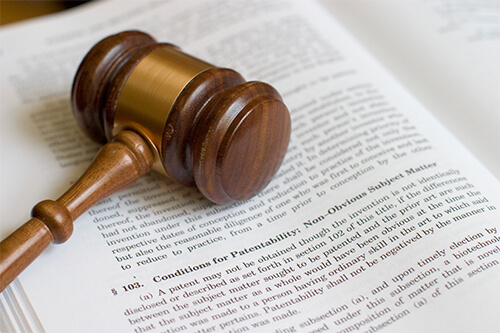 The Indian Patent Act, 1970 (act) is based on the 1959 Report on the Revision of the Patents Law of the Ayyangar Committee and governs the patent framework. In particular, the act allows patentees to request the grant of a patent of addition to cover improvements to or modifications of the invention covered by the main patent. The main patent will only have been granted if the application for it satisfies the test of invention and a patent of addition will only be granted after the grant of the main patent.
The Indian Patent Act, 1970 (act) is based on the 1959 Report on the Revision of the Patents Law of the Ayyangar Committee and governs the patent framework. In particular, the act allows patentees to request the grant of a patent of addition to cover improvements to or modifications of the invention covered by the main patent. The main patent will only have been granted if the application for it satisfies the test of invention and a patent of addition will only be granted after the grant of the main patent.
Under the act there are five categories of applications.
- Ordinary applications that have been filed directly in the Indian Patent Office (office);
- Convention [Paris Convention] applications;
- Patent Cooperation Treaty (PCT) applications;
- Divisional applications, in which a patent application is separated from the parent application as it covers another and distinct innovation; and
- Patent of addition applications, which may be made no earlier than the filing of any application in the other four categories.
Patents of addition
Patents of addition are dealt with in sections 54, to 56 of the act. The applicant must be the same as in the main patent application. Under Rule 13(3) of the Patent Act Rules, 2003 (rules) each patent of addition shall include a reference to the main patent and shall contain a definite statement that the invention comprises an improvement in, or a modification of the invention claimed in the specification of the main patent granted or applied for.
While some countries such as India, Australia and the US provide for such patents, several have done away with patents for the improvements to, or modifications of the main invention. In any event a patent expires 20 years from the filing date of the earliest application in which benefit is claimed.
If the patentee requests the Controller of Patents, Designs and Trade Marks (controller) to revoke the patent for the main invention the patentee may also request the controller to allow the patent of addition to stand as an independent patent for the remainder of the term of the main patent. The same fees are then payable as if the application were an application for a main patent.
Section 11B of the act provides that no application for a patent will be granted unless it is published and unless the applicant or other interested person requests an examination by the office, and rule 24B of the rules prescribes that such a request must be made within 48 months from the earlier of the date of priority of the application or the date of filing of the application. If no request for examination is made within that period the office will treat the application as withdrawn.
Once received, a request for examination will be dealt with in chronological order of receipt of filings. The controller will refer the patent application to an examiner to conduct a formal as well as substantive examination. The examiner will be assigned according to which of four categories into which the subject matter of the invention falls, namely chemistry and allied subjects; biotechnology, microbiology and allied subjects; electrical, electronics and related subjects, and mechanical and other subjects.
The reference to the examiner is made ordinarily within one month from the date of publication or from the date of request for examination, whichever is later. The examiner makes a report on patentability as well as other matters ordinarily within one month but not exceeding three months from the date of such reference. The report will be disclosed to the applicant but if the application for examination has been made by an interested person only the fact that a report has been made will be disclosed to that person.
Conclusion
Patents of addition serve a useful purpose in protecting improvements or modifications that were not covered in the main patent. There is, however, a major issue with request for examination of patents of addition. In the other four categories of applications, there are provisions for filing a request for examination on prescribed forms and the payment of prescribed fees within the stipulated time period. However, there are no such provisions for requests for examination in applications for patents of addition. Indeed, the act is silent in respect to such examination procedures. It would therefore be prudent for an applicant to file a request for examination with the filing of an application for a patent of addition.
Article by Preeti Sharma : https://www.vantageasia.com/
First published in India Business Law Journal



